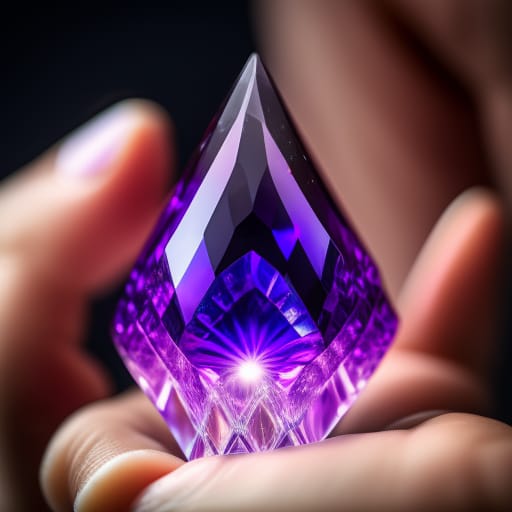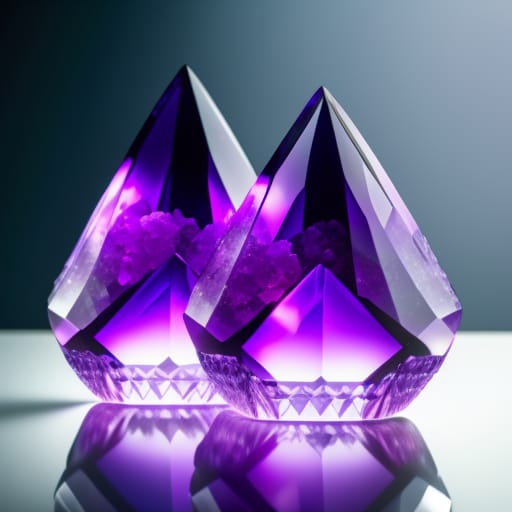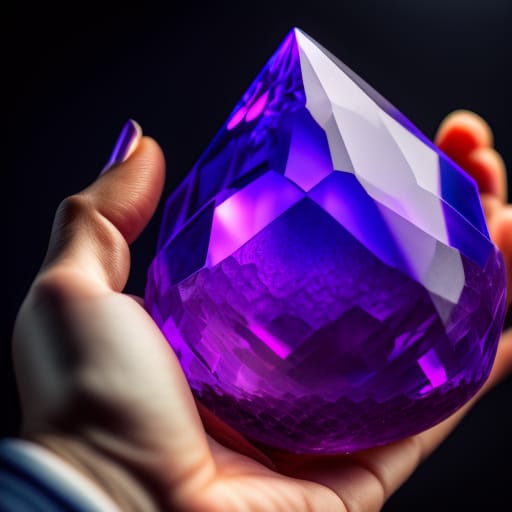Crystal growing kits are a fun way to learn about chemistry and mineralogy. These kits allow you to grow your own colorful crystals at home through a process called crystallization. Once your crystals have formed, it’s tempting to want to handle them and see how they feel. But is it actually safe to touch crystals grown from these kits?

What Are Crystal Growing Kits?
A crystal growing kit contains all the materials you need to grow crystals at home. The kit includes:
- A crystal growing solution – this is a saturated liquid solution containing dissolved minerals like salt, borax, or alum.
- A seed crystal – a tiny crystal added to the solution to encourage crystallization.
- A clear container – usually a glass jar or vial.
- A display stand – to lift the jar and allow the crystals to grow downward.
- Illustrated instructions on how to grow the crystals.
To grow crystals, you simply follow the kit’s instructions to combine the crystal growing solution with the seed crystal in the glass container. Over the next few days or weeks, the dissolved mineral comes out of the solution and bonds to the seed crystal. This causes the crystals to slowly grow larger and form beautiful geometric shapes.
Are the Crystals Safe to Touch?
The crystals grown from most crystal growing kits are completely safe to gently touch with clean, dry hands. However, there are a few precautions to take:
- Wash hands before and after touching – Wash your hands thoroughly with soap and water both before and after handling the crystals. This prevents oils from your hands from interfering with the crystal structures.
- Avoid rough handling – Crystals have smooth, well-defined faces and points. Handle them gently to avoid chipping or breaking these fragile structures. Never squeeze, bend, or apply pressure.
- Don’t lick crystals – While touching is fine, never taste or lick the crystals. Some crystal growing compounds like borax can be toxic if swallowed.
- Supervise children – If doing a crystal growing science experiment with children, closely supervise them when handling the crystals. Ensure they follow safe handling practices.
- Check instructions – A small number of crystal growing kits may use compounds that can irritate skin if touched, like copper sulfate. Always check the kit’s instructions for any safety warnings.
Common Crystals Grown from Kits
Here are some of the most common crystals grown from beginner crystal growing kits:
Table Salt (Sodium Chloride)
- Transparent cubic crystals
- Edible but salty, so avoid licking
- Safe for kids to touch
Alum (Potassium Aluminium Sulfate)
- Transparent octahedral crystals
- Can sting if gets cuts, so wash your hands after
- Generally safe to touch
Borax (Sodium Borate)
- Transparent tetragonal crystals
- Toxic if swallowed, so supervise kids
- Safe to touch with washed hands
Epsom Salts (Magnesium Sulfate)
- Transparent prismatic crystals
- Very safe and non-toxic
- Safe for kids to handle

Why Do Crystals Form Such Defined Shapes?
Crystal growing relies on chemistry and physics. Here’s a quick explanation of how crystals get their symmetrical shapes:
- Crystals are solids where the molecules form an ordered, repeating 3D lattice structure.
- The molecules attach to the lattice in a regular, geometric pattern.
- As the crystal grows, new molecules are added to the lattice in the same pattern.
- This consistent molecular alignment creates smooth, symmetrical crystal faces.
- The final shape arises naturally from the molecular bonds and follows the laws of physics.
So in simple terms, crystals grow into defined polyhedral shapes because of the ordered way the molecules stack together as the crystal enlarges.
Crystal Growing Science Project
Growing crystals makes an excellent science fair project. Some ideas:
- Test growing different types of crystals and compare their shapes.
- Try changing the temperature and see if it changes crystal size.
- Add food coloring to the solution and observe how it impacts crystal color.
- Try growing a single, large crystal by carefully extracting it and replacing the solution.
- Investigate how impurities affect the crystal structure.
- Research real-world crystal applications like semiconductors.
Always thoroughly document your experimental procedure and results. Photos of the crystals at each stage are also useful.
Tips for Growing Large, Well-Formed Crystals
Here are some tips to help you grow large, perfect-looking crystals:
- Use highly purified solutions and filtered water for fewer impurities.
- Carefully maintain a stable temperature in the crystal growing area.
- Ensure containers and strings are free of defects that could seed multiple crystals.
- Gently extract the initial small crystals and transfer them to a fresh solution to enlarge them.
- Allow crystals to grow undisturbed for weeks in a dust-free environment.
- Consider investing in a professional crystal growing kit once you’re experienced.
Patience and close attention to details like temperature and purity will reward you with stunning crystalline structures.
Fun Facts About Crystals
- Natural crystals can grow to massive sizes. Quartz crystals in caves can be over 10 feet long!
- Many gems like diamonds, emeralds and rubies are crystal varieties.
- Crystals were once believed to have mystical healing powers. They’re still used in some new age practices.
- Polarized crystal prisms were vital in early radio and television technologies.
- Today crystals are used in lasers, computer chips, and even ultrasound technology.
- Some living things like viruses and mollusk shells contain microscopic crystals.
- Snowflakes are a form of crystallization as water molecules align when freezing. No two are alike!
Beginner’s Guide Summary
- Crystal growing kits allow you to simply and safely grow mineral crystals at home through crystallization.
- Most crystals grown are safe to gently touch with clean hands after taking basic precautions.
- Crystals form symmetrical polyhedral shapes due to the orderly repeating molecular lattice.
- Growing crystals makes a great hands-on science project for kids to learn chemistry.
- With care and the right techniques, you can grow large, perfect-looking crystals.
So in summary, it’s generally fine to touch your homegrown crystals as long as you handle them gently and with clean hands. Growing crystals is an educational and rewarding hobby that’s great STEM learning fun for both kids and adults!

Frequently Asked Questions
What are the best crystals to grow for beginners?
Some good starter crystals are table salt, alum, and borax. These form nice cubic and octahedral shapes reliably and are relatively easy to grow.
Is it safe for children to touch crystals from growing kits?
Yes, it’s generally safe for kids to touch crystals from most beginner growing kits as long as they are supervised and follow basic safety precautions like washing hands before and after. Good crystals for children are table salt and epsom salts.
How long does it take crystals to form?
Crystal growing is a slow process, so patience is key. Small crystals may form within days but growing large, well-defined specimens can take weeks or even months. Ensure the solution is supersaturated and allow the crystals time to enlarge through proper crystallization.
What causes crystals to grow into shapes?
The orderly, repeating crystal lattice structure causes crystals to form smooth polyhedral shapes with flat faces. New molecules stack onto this existing lattice in a symmetrical pattern as the crystal gets larger.
Can I reuse the crystal growing solution after harvesting crystals?
Yes, the solution can be reused to grow new batches of crystals. Simply filter the solution to remove any crystals or impurities. You may need to remix it and allow time for the minerals to re-dissolve and become supersaturated again before adding new seed crystals.